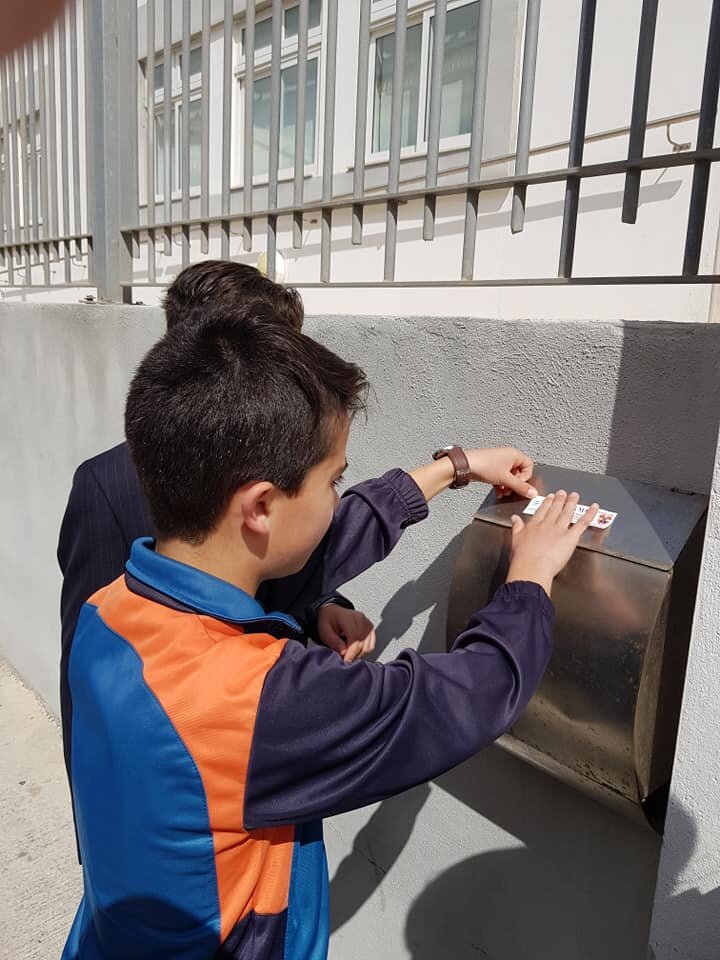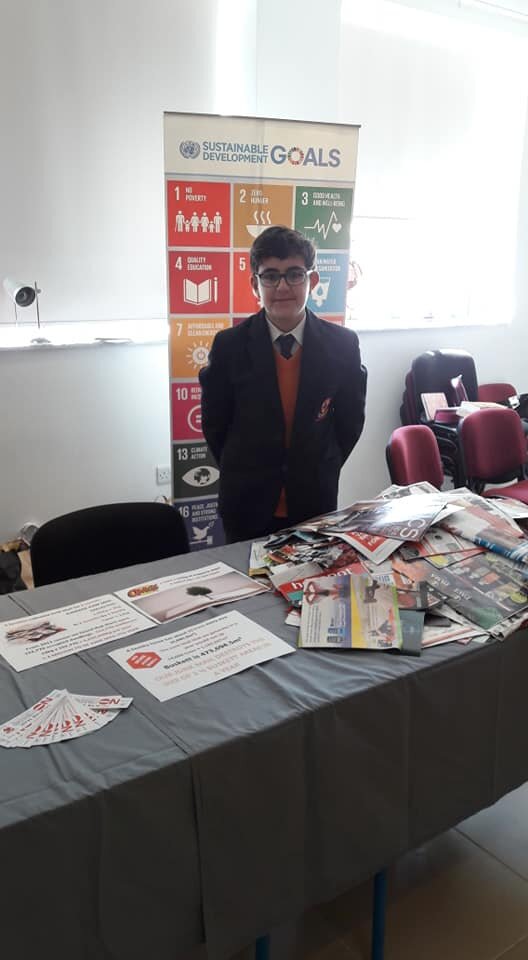YRE Competition 2019
Litter Less Campaign
11-14 years
We wrote this article to spread the word about the worrying data we collected about the local Junk Mail situation during our Litter-Less research. We managed to enroll 9 families in our school community and they agreed to keep the junk mail they received over a period of two months. We then weighed that mail and calculated the amount the families would have collected over a year. We also estimated how much junk mail would have been collected if we had to multiply the results to the number of dwellings in Malta. Moreover we estimated the number of trees that would have to be cut down to create all that paper that will end up as Junk Mail. The results we obtained were mind blowing and all this after the massive ‘Sort it out’ campaign. Are we really sorting it out?
Sort it out!! Sort it out!! Everyone agrees that this was the most popular environmental slogan in Malta in 2019. A vast campaign was carried out to promote a better separation of waste practice and to introduce the separation of organic waste. Around 150,000 food waste bins were distributed together with other bins for mixed recyclables, glass, sanitary waste and other waste. Still, we wonder…are we really sorting things out?
Our teachers, often ask us to find pictures for projects and to our surprise, we find that we always have pictures available from the large number of magazines and pamphlets that we receive in our mail at home. This makes us wonder. How much of this so called Junk Mail do we actually receive? According to Collins English Dictionary, the definition of Junk Mail is “advertisements and publicity materials that you receive through the post which you have not asked for and which you do not want”.
Therefore we set forth to carry out a research. We wrote a post on our school Facebook page to find parents who were willing to help out in this exercise. We found 9 families from different localities in our college catchment area who were ready to participate. These families were asked to keep the Junk Mail that they receive for two months.
Once the exercise was over, the Junk Mail collected was brought to school. The results obtained were astonishing. The average Junk Mail collected over two months was an impressive 1.99 kg rounded up to 2 kg. This mail mainly consisted of holiday brochures, toy shop promotional magazines, political leaflets and others advertising supermarkets and shops.
This figure itself was already alarming but if you had to calculate the mass of Junk Mail that we receive over 12 months (1 year) it would amount to 12 kg of waste. This 12 kg of junk is estimated to be received only by one household. Next, we estimated the amount of Junk Mail distributed around the island in one year. Therefore we referred to the Census of Population and Housing report available online and found out that in 2011 there were 152,770 occupied dwellings. If you had to multiply the average amount of Junk Mail received at one household over a year, to the number of occupied dwellings in Malta and Gozo, you would end up with an impressive 1,833,240 kg per year of Junk mail. Nearly 2 million kg of unwanted stuff that you throw away anyway!
We wanted to dig further into this problem. We wished to quantify the damage done to the environment as a result of the paper being produced for these magazines. We tried to calculate the number of trees being cut down to produce such useless mail. It is very difficult to calculate the precise amount of paper that one tree produces but after doing a thorough research, we estimated that 125 kg of magazine paper is produced from one tree. By working a simple proportion sum, we were able to calculate the rough estimate of the number of trees that 1,833,240 kg of Junk Mail would use up. This amounted to a staggering 14,666 trees. And how large a forest area would that be?
According to The Mountain Area Safety Taskforce (MAST) in California, an NGO that educates the public to prevent forest fires, a healthy forest usually has between 40 to 60 trees per acre (4,046.9 m2). Therefore, the destruction of 14,666 trees for the production of our Junk Mail for a year, would add up to about 1,187,037 m2. Our biggest woodland area i.e. Buskett is 473,694.5 m2. This means that our Junk Mail is destroying the size of 2 ½ Buskett areas a year.
Since this Junk Mail mainly consists of commercial brochures, one wonders whether it is fair that for a couple of companies to increase their profits, the country has to suffer the consequences of that large amount of waste. Other questions arise: Are these companies held responsible for this large amount of waste they are generating? Are they paying some eco-tax to make up for the waste their company is creating?
It is true that some might find this mail useful but for the majority of families, this type of mail finds its way directly from the mail box to the recycling bin, if not in the mixed waste bin, which would be a lot worse. And what about the large amount of mail that ends up flying off from the mail box when left half hanging and littering all our streets?
This research was an eye opener for us and made us realise how our countries’ priorities are still far from being properly set to reflect the severity of the local waste management problem. We are still largely concentrating on the recollection and recycling practices and are not giving enough importance to a very important letter ‘R’, REDUCING WASTE.
So we set forth to make a difference and used the funds from the local Litter Less Campaign to produce No Junk Mail stickers. These were distributed to all the students at our school and given out to neighbours in our community. We believe that if we refuse this mail, the production of it will eventually decrease. This takes time, but every little helps.
We are ready to put a lot of effort into making a difference but we cannot understand how a commercial practice that is so obviously creating such a large amount of waste is still being allowed without any penalties in an era where everything can easily be accessible at the touch of a button over the internet through websites and social media. Therefore we urge local authorities to take things seriously and start to REFOCUS on REDUCING not just on recycling and eventually maybe really SORT THINGS OUT!!


